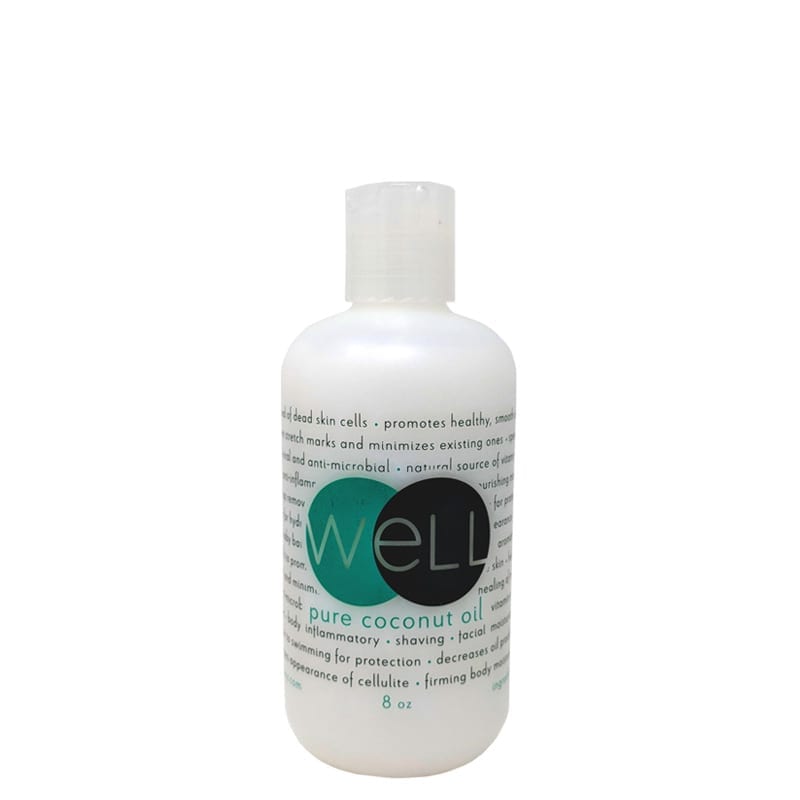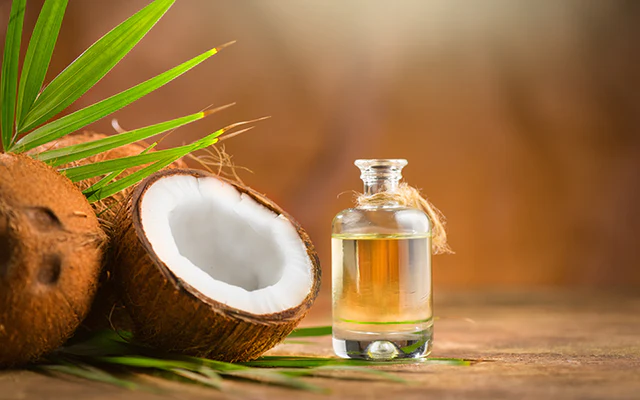Introduction
Coconut oil, with its myriad of uses and health benefits, has become a staple in many households. Whether it’s the fresh, aromatic oil straight from the Philippines or the neatly packaged jars and tubs from the grocery store, understanding how to store coconut oil properly is essential for maintaining its quality and extending its shelf life.
From the tropical scent of virgin coconut oil to the more neutral refined oil, each type requires specific storage techniques to preserve their unique characteristics. In this guide, we’ll explore the best practices for storing coconut oil, ensuring that whether you’re using it for cooking, skin care, or as a dietary supplement, your coconut oil remains fresh and effective.

Choosing the right container and location for storage plays a crucial role in preserving the integrity of coconut oil. Factors such as light exposure, temperature, and air can all impact the oil’s quality. By following the forthcoming tips on selecting containers, understanding the shelf life, and recognizing signs of spoilage, you can confidently keep your coconut oil in prime condition.
Whether you have a sachet for on-the-go use or a large tub for your pantry, these guidelines will help you make the most of this versatile and healthful oil.
Choosing the right container

Dark, airtight container
When it comes to choosing the right container for storing coconut oil, a dark, airtight option is paramount. Light, particularly sunlight, can degrade the quality of coconut oil by accelerating the oxidation process.
Therefore, an opaque or dark glass container is ideal as it effectively blocks out light, preserving the oil’s freshness and nutritional value.
If you’re using a clear container, consider wrapping it in a dark towel or storing it in a dark cupboard to shield it from light exposure. Ensuring the container is airtight is equally important, as exposure to air can lead to rancidity.
A well-sealed lid keeps the coconut oil protected from the elements, locking in its natural aroma and benefits.
While glass is often the preferred choice for many due to its inert nature, ensuring that any plastic containers used are BPA-free is a good practice for those opting for a lightweight alternative. Regardless of the material, the key is to ensure that the container does not react with the oil or impart any unwanted flavors or chemicals.
By selecting the appropriate container, you can maintain the purity and longevity of your coconut oil, whether it’s the extra virgin, raw, unrefined, cold-pressed, organic variety or a more processed form. Remember, a quality container is an investment in preserving the essence of your coconut oil.
Glass vs. plastic
When deciding between glass and plastic for storing coconut oil, glass is often the superior choice. Glass jars do not interact with the oil, ensuring that the purity and taste remain uncompromised. Moreover, glass is non-porous and does not absorb odors or colors, which could affect the oil’s quality over time.
For those concerned about the potential leaching of chemicals from plastic, choosing glass provides peace of mind, especially when opting for high-quality, 100% pure coconut oil. However, if convenience and portability are priorities, BPA-free plastic containers offer a practical solution, as they are lightweight and less fragile than glass, making them suitable for travel and less prone to breakage.
Ultimately, the choice between glass and plastic containers may come down to personal preference and intended use. If you’re storing coconut oil at home, a dark, airtight glass jar is the optimal choice to ensure freshness and prevent spoilage.
On the other hand, for those on the move, BPA-free plastic containers can be a convenient option, especially when using pre-measured sachets that provide portion control and ease of use.
Regardless of the material, it’s crucial to store coconut oil in a cool, dark place away from direct sunlight to maintain its quality and extend its shelf life. By considering these factors, you can select the best container for your coconut oil storage needs, whether it’s for culinary use, skin care, or as a natural remedy.
Storage location

Room temperature vs. refrigeration
When it comes to the storage location of coconut oil, the debate between room temperature and refrigeration is often a matter of personal preference. Storing coconut oil at room temperature is generally recommended, as it keeps the oil in a semi-solid state that is easy to scoop and use. A cool, dark cupboard away from heat sources is ideal, ensuring the oil remains fresh while retaining its nutritional properties.
On the other hand, refrigeration is not necessary for extending the shelf life of coconut oil, which typically lasts up to two years. However, if you prefer your coconut oil in a more solid state, or if you’re using it as a cooling moisturizer, keeping it in the fridge can be beneficial.
It’s important to note that refrigerating coconut oil does not significantly increase its shelf life beyond the standard two years. If you do choose to refrigerate, be aware that the oil will harden, but it can easily be softened by leaving it at room temperature for a short period before use.
Whether stored in the pantry or the fridge, ensure that the container is tightly sealed to prevent moisture and contaminants from affecting the oil’s quality.
By understanding the effects of temperature on coconut oil, you can make an informed decision on the best storage method for your needs, ensuring that your coconut oil remains a versatile and valuable addition to your kitchen or beauty routine.
Avoiding direct sunlight

Direct sunlight is a known adversary of coconut oil’s longevity, as it can accelerate the oxidation process, leading to spoilage. To circumvent this, it’s essential to store coconut oil in a location that does not receive direct sunlight.
A pantry, cupboard, or any shaded area that remains cool and dry will serve as an ideal storage space. By keeping the oil out of the sun’s rays, you help preserve its freshness and nutritional value, ensuring that it remains a healthy and effective product for cooking, skin care, or hair treatment.
For those who prefer to keep coconut oil in a visible location, consider using an opaque or dark-colored glass container to block out light, or alternatively, wrap the container in a dark towel for added protection.
This simple step can make a significant difference in maintaining the quality of your coconut oil. Remember, consistent storage practices are key to enjoying the full benefits of this versatile oil, so always opt for a cool, dark spot away from the damaging effects of sunlight.
Shelf life of coconut oil

Signs of spoilage
Despite coconut oil’s impressive shelf life, it’s not immune to spoilage. Recognizing the signs of rancidity is crucial to ensure you’re using a product that’s safe and beneficial.
A rancid smell is a clear indicator; virgin coconut oil should have a pleasant, sweet aroma, while refined oil should be neutral—if either emits a sour or musty odor, it’s time to discard it.
Additionally, any discoloration, such as a yellow tint in liquid form or the presence of black spots, suggests the oil has turned and should not be used. The texture should remain smooth; any graininess or lumps may also signal that the oil is no longer at its best.
Using your senses is key to detecting bad coconut oil. If the taste is off or the smell is unpleasant, it’s wise to err on the side of caution and throw it away.
While coconut oil is stable and can withstand changes in state from solid to liquid, these alterations do not affect its integrity. However, changes in smell, taste, and appearance are reliable indicators that the oil has been compromised.
By staying vigilant and checking for these signs, you can ensure that your coconut oil remains a healthy addition to your pantry or beauty regimen.
Using expired coconut oil
When it comes to using expired coconut oil, it’s best to err on the side of caution. While coconut oil has a relatively long shelf life, using it past its prime can lead to less than desirable results, both in culinary and cosmetic applications.
If you’ve noticed any signs of spoilage, such as an off-odor or discoloration, it’s advisable to dispose of the oil. Using spoiled coconut oil can not only diminish the quality and flavor of your dishes but also potentially cause skin irritations or other adverse reactions when used topically.
It’s important to note that while coconut oil is robust, with a high saturated fat content that lends to its stability, this doesn’t make it invulnerable to going bad.
If you’re unsure about the oil’s condition, it’s better to replace it with a fresh batch to maintain the benefits it provides.
Always remember that proper storage is the key to extending the shelf life of coconut oil, so invest in good storage habits to avoid the need to use oil that may have expired.
Tips for maintaining coconut oil quality
Avoiding moisture contamination
One of the critical factors in maintaining the quality of coconut oil is preventing moisture contamination. Introducing water into the container, even in small amounts, can create an environment conducive to bacterial growth and spoilage.
To avoid this, always use dry, clean utensils when scooping out the oil, and ensure that the lid is sealed tightly after each use. If your coconut oil comes into contact with moisture, it’s best to discard it to prevent the risk of consuming contaminated oil.
Moreover, storing coconut oil in a cool, dry place away from sources of humidity like the stove or dishwasher can further protect it from moisture.
By being mindful of these simple yet effective practices, you can help preserve the freshness and extend the shelf life of your coconut oil, keeping it safe and beneficial for all its versatile uses.
Preventing exposure to heat
Another vital step in preserving the integrity of coconut oil is to shield it from heat. High temperatures can accelerate the oil’s degradation process, leading to a shorter shelf life and potential spoilage. To prevent this, choose a storage location that remains consistently cool.
A pantry or a cupboard away from the stove, oven, or any other heat-generating appliances is ideal. By doing so, you ensure that the coconut oil maintains its quality and nutritional properties, making it a reliable ingredient for your culinary and beauty needs.
During warmer months or in hotter climates, it’s especially important to monitor the temperature where your coconut oil is stored. If the indoor temperature rises significantly, consider moving the coconut oil to a cooler spot or even refrigerating it to keep it solid and stable.
However, remember that refrigeration is not necessary for extending the oil’s shelf life beyond its typical two years, and should only be done based on personal preference or specific uses, such as creating a cooling effect for topical applications (The Coconut Mama).
Minimizing air exposure
To further ensure the longevity of coconut oil, it’s essential to minimize its exposure to air. Each time the container is opened, the oil comes into contact with oxygen, which can start the oxidation process, potentially leading to rancidity.
To combat this, always make sure the lid is screwed on tightly after use. For added protection, consider transferring the oil to a smaller container as the amount decreases, reducing the volume of air that comes into contact with the oil.
This simple yet effective step can significantly contribute to maintaining the oil’s freshness and nutritional value over time.
Additionally, for those who use coconut oil infrequently, investing in single-use sachets can be a practical solution. These pre-measured packets not only help in portion control but also ensure that the oil is exposed to air only when it’s about to be used, thus preserving its quality. Whether you’re at home or on the go, these sachets can be a convenient way to enjoy fresh coconut oil without the worry of oxidation (Coconut Merchant).
Conclusion

Understanding how to store coconut oil properly is key to preserving its shelf life and health benefits. By selecting the right container, maintaining an optimal storage location, and taking steps to prevent heat, light, and air exposure, you can ensure that your coconut oil remains fresh and effective for both culinary and topical use.
Whether you’re a fan of the rich flavor and aroma of virgin coconut oil or prefer the neutral profile of refined oil, proper storage is essential. Remember, while refrigeration is not a necessity, it can be a personal choice for specific needs.
Ultimately, the versatility and benefits of coconut oil make it a valuable addition to any pantry or beauty regimen. By following these simple storage guidelines, you can enjoy the full potential of this wonderful product.
Keep your coconut oil in optimal condition, and it will continue to be a reliable, nourishing ingredient that complements a variety of uses, from enhancing your favorite dishes to nourishing your skin and hair.
Sources:
- https://greatist.com/discover/does-coconut-oil-go-bad
- https://www.quora.com/Can-I-store-coconut-oil-in-the-fridge-Will-it-change-in-any-way-other-than-from-a-liquid-to-a-soild
- https://coconut-merchant.com/blogs/coconut-information/how-do-you-store-coconut-oil-in-the-summer
- https://www.epicurious.com/ingredients/how-to-buy-and-store-coconut-oil-cream-milk-article
- https://thecoconutmama.com/how-to-store-coconut-oil/
FAQ
Should you refrigerate coconut oil?
You don’t need to store coconut oil in the fridge, even when your jar or tub has been opened. The rule of thumb for all edible oils is to store them in a cool, dark place to keep them fresh and retain any nutritional values.
How long does coconut oil last once opened?
Unrefined virgin coconut oil is the longest lasting, boasting a shelf life of up to 3 years when stored properly. On the other hand, refined coconut oil has a much shorter shelf life and should be used within 18 months of opening the jar or bottle.
Can you put coconut oil in the freezer?
Coconut oil can be frozen for long-term storage as long as it is placed in a freezer-safe container. If the oil is in a liquid state and you require it to be in solid form for baking, place the required amount in the refrigeration for several minutes to firm up.
Why did my coconut oil turn into liquid?
Our Coconut Oil maintains its creamy form best when kept at room temperature. Therefore, when kept in a warmer space above 77°F, it will melt and become a liquid. This does not affect the quality of the oil and it can be reverted back to its original form by being stored in a room temperature area.
Originally posted 2023-12-08 12:59:54.

